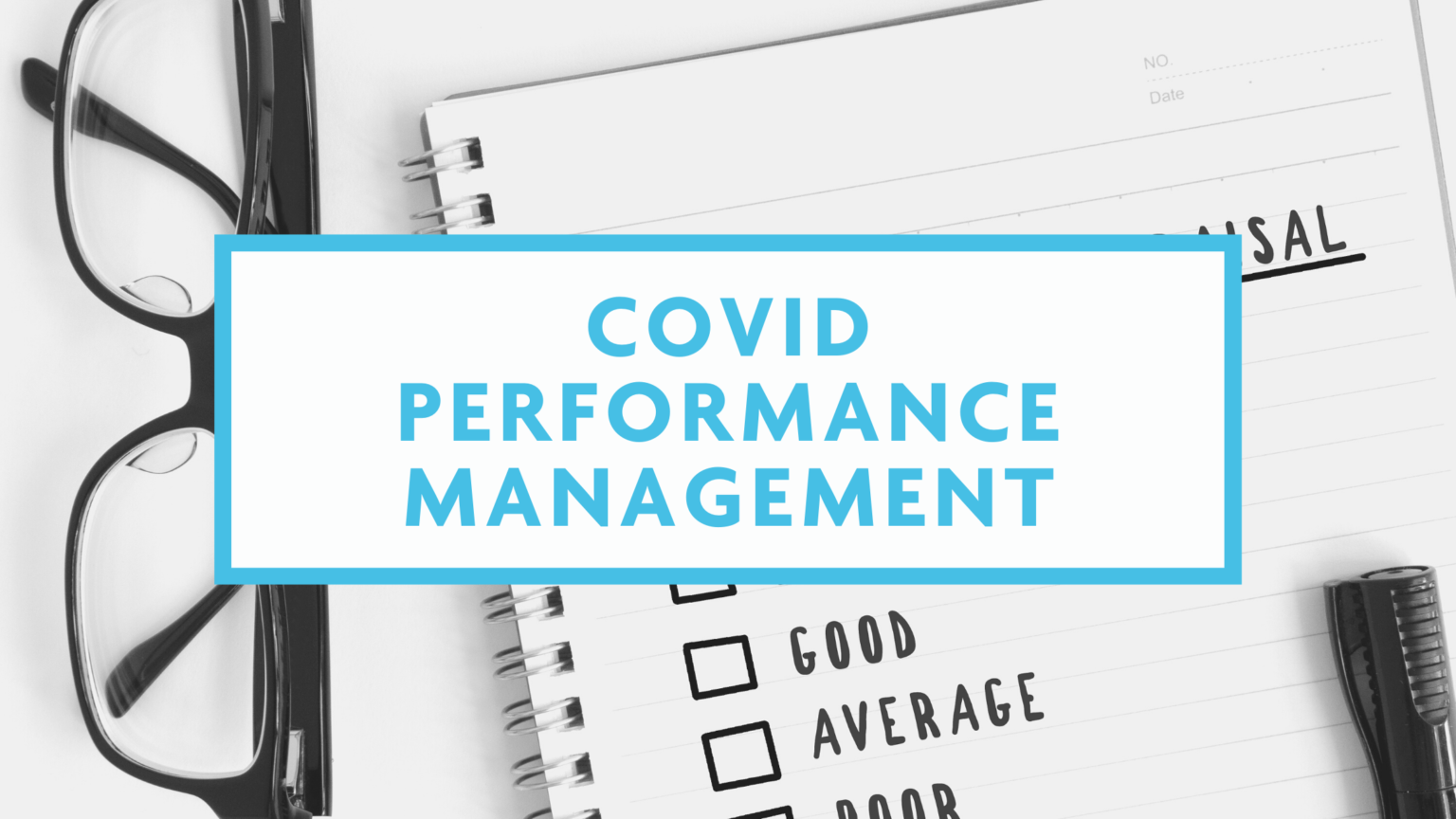COVID-19 has made many aspects of employee management difficult. Now, one year into the COVID-19 pandemic, employers are having to adapt to the extended repercussions of the COVID-19 workplace. One persistent challenge is effective performance management, including performance appraisals and disciplinary action.
Performance management suffers from distance, reduced face-to-face interactions, changing job duties, and increased absences. While it may need to look different than your typical performance management process, it is important to communicate your performance goals and hold employees accountable, especially if you have not done so in a while. If, given the circumstances, you are unclear as to your performance goals for employees, now is the time to focus on those. You can’t hold people accountable for their performance if you do not know what you need. And, if you changed your usual procedures due to COVID-19, as with any temporary adjustment, your performance review process can be modified now and returned to your usual timing and format when possible.
Performance appraisals, also known as performance reviews, are typically done once a year either on the employee’s anniversary date or on a date based on the company’s seasonal demands. While many employers delayed appraisals in 2020, they should now find new effective and fair ways to evaluate employees. Moreover, now may be a good time to evaluate a more pro-active and frequent form of performance feedback given the challenges that remote work and business disruptions create. If your performance management system wasn’t working before, it’s probably not working now. Time to look for alternatives.
Disciplinary action including warnings, suspensions, and terminations should be conducted and documented as incidents occur throughout the year. While this is an uncomfortable responsibility for most managers during normal times, disciplinary action has become even more difficult during the pandemic as employers seek to minimize additional disruptions and added tensions on top of the stress of COVID-19. But it has to be done.
Both performance appraisals and disciplinary action require similar approaches and considerations to be effective and productive:
- Evaluate the job duties employees are actually doing, not what they were hired to do or had been doing prior to March 2020: Be fair but be firm. If the employee’s unacceptable performance, behavior, or attendance is impacting co-workers or operations, you need to address it as soon as possible. You should not hold employees accountable for job duties they can no longer perform whether due to operational changes or mandated remote working arrangements. However, if they can and should be performing duties they are not, this should be discussed with the employee and, if necessary, addressed. Additionally, if an employee is doing more than expected, either in the office or at home, give them the proper recognition.
- Be more lenient with poor attendance, especially if COVID-19-related: Attendance is an essential requirement of every job. However, most employees have had a greater than average number of absences in 2020 due to COVID-19-related reasons. If possible, do not hold employees responsible for these COVID-19 absences when evaluating performance. Since some people have been hit harder than others, you should also not reward those who missed little to no time as it may appear as retaliating against those who need to take time off due to illness, childcare needs or because of mandated quarantines. And remember, many states have protected COVID-19-related absences.
- Plan for future job performance: Advise the employee of your expectations and work with them to make necessary changes, especially if it will impact their childcare, commuting, etc. If giving an appraisal, use it as an opportunity to discuss the company’s future plans and how the employee will contribute to that future: Are you planning to bring employees back into the office or switch to a hybrid plan? Are you going to re-align job duties or eventually return to pre-COVID-19 job functions?
If giving disciplinary action, clearly explain your expectations and the consequences (e.g., further discipline, suspension, loss of pay related to fewer duties, termination, etc.) if they do not correct the behavior in a timely manner. For example, if you are planning to stay remote, work with them to make the arrangement more productive for everyone. The more serious the issue, the more quickly you should proceed through the disciplinary steps. - Deliver face-to-face, even if by videoconference: Effective communication relies on verbal and non-verbal cues in order to be able to read each other’s reactions during the performance conversation. If you cannot meet in person, choose a video conferencing method as it is the next best option. Send the employee their completed performance appraisal right before or as you begin the call so you can walk them through it as they may not understand the subtleties if they read it first. And most importantly, listen to their concerns as there may be things affecting their performance that you may not have taken into consideration.
- Schedule a time to follow up: After you have completed the performance management meeting, ask if the employee has any questions. Offer them time to review the information and provide written feedback. Schedule a time in the near future to circle back and make sure everyone in on the same page moving forward.
- Discuss status of pay increases: If you normally give pay increases with good performance appraisals, you need to plan on what increases are possible. If you’ve had a banner year, given the strains on the workforce, consider a more generous increase or incentive bonus. Or, if increases are not possible due to financial constraints, explain this to the employee as well as when you expect to give increases again.
- Say it with me – Document, document, document: Documentation serves as a neutral, fact-based summary of the employee’s performance, behavior, and attendance as well as your expectations going forward. Whether giving an appraisal or a disciplinary warning, you must be able to prove that you communicated the employee’s actual performance or behavior, your expectations, and a plan for moving forward. You also need to prove that they received this communication, realized the rewards for meeting these expectations, and understood the impacts if they fail to meet them. Write everything up and have the employee sign it; if the employee fails to sign, have another manager witness you summarizing the conversation and have them sign as a witness. This document will help you accurately evaluate future performance or behavior as well as take more serious disciplinary action, including termination, if needed in the future.
While the work-related impacts of COVID-19 will continue and evolve, Affinity HR Group will be here to help you navigate through all the impacts to you and your employees.
By Paige McAllister, SPHR, SHRM-SCP, Vice President for Compliance – Affinity HR Group, Inc.





